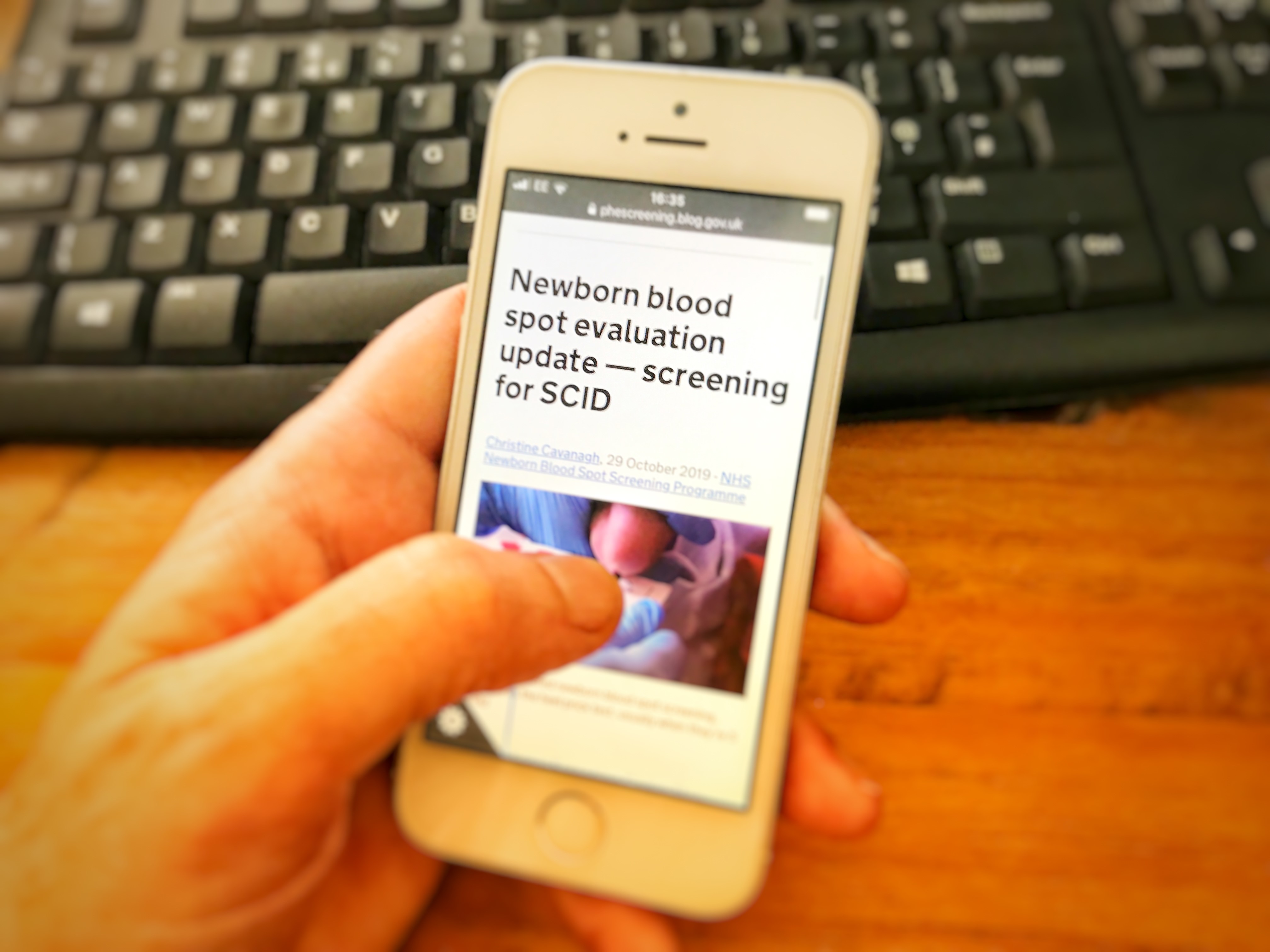
Regular readers of the blog will know that an evaluation into screening babies for severe combined immunodeficiency (SCID) in England is due to start.
The evaluation will begin on 6 September 2021 and initially run for 2 years, covering around two-thirds of the newborn population of England.
It will continue to run in a third year while the results are used to make a recommendation about whether it should become part of the NHS Newborn Blood Spot (NBS) Screening Programme in England.
The laboratories included in the evaluation are:
- Birmingham
- Great Ormond Street Hospital (GOSH), London
- Manchester
- Newcastle
- Sheffield
- South East (SE) Thames
New pathway
A lot of work is going on behind the scenes – and inevitably there are some final adjustments ahead of launch. This blog article is to explain a bit more about a new pathway for premature babies who are part of the SCID screening evaluation.
Immunology services, midwives and other health professionals who will be offering screening for SCID need to be aware of this new pathway ahead of the launch.
Background
A review of the latest data showed that a larger number of babies born before 37 weeks would need to be referred to immunology services than had been initially thought. More information about why this would happen is described below in the section on T-cell receptor excision circles (TRECs).
Following the review, a decision was made to introduce an additional pathway, the aim of which is to reduce:
- the number of families whose babies are unnecessarily referred for diagnostic testing, causing them worry
- pressures on clinical and laboratory immunology services
Lower TRECs
Screening for SCID uses something called a TREC assay to look for babies who have fewer white blood cells than usual. This can be a sign that they have SCID.
Babies with lower TREC numbers are investigated further to find out for certain if they have SCID.
It is important to note that although babies born before 37 weeks tend to have lower TREC numbers than term babies, they are no more likely to have SCID.
Babies born before 37 weeks and in hospital
A small proportion of babies born before 37 weeks who have been screened for SCID and are still in hospital will need a second sample at 37 weeks corrected gestation or on discharge, whichever is sooner. The laboratory will request a second sample, if one is needed.
Where a repeat congenital hypothyroidism (CHT) sample is needed on discharge, the same blood spot sample can be used for this and the second SCID sample.
Babies born before 37 weeks and in the community
There is no need for a second SCID screening sample if the initial sample was taken in the community, regardless of the gestation.
Any questions
We’re also cascading further information about the new pathway for babies born before 37 weeks directly to immunology teams and other relevant health professionals.
Please contact the PHE Screening Helpdesk with any questions you have about the new pathway.
Other resources
The SCID evaluation resources will be available on GOV.UK later this month on the newborn blood spot screening document collection page under a new ‘SCID’ heading.
As always, keep an eye out for blog articles that include the SCID tag ahead of launch.
We’ll be blogging again very soon to:
- launch a new e-learning resource for health professionals, which includes more information about the new pathway for babies born before 37 weeks
- launch the new SCID resources on GOV.UK, including the patient information leaflet
- explain in detail about the scenarios in which SCID will be offered, and when
PHE Screening blog
The PHE Screening blog provides up to date news from all NHS screening programmes. You can register to receive updates direct to your inbox, so there’s no need to keep checking for new blogs. If you have any questions about this blog article, or about population screening in England, please contact the PHE screening helpdesk.